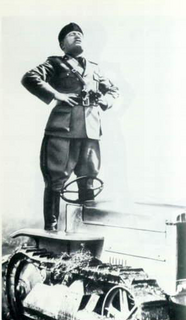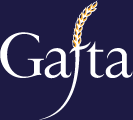 W
WThe Battle for Grain, sometimes known as the Battle for Wheat, was a campaign launched during the fascist regime of Italy by Benito Mussolini, with the aim of pursuing the self-sufficiency of wheat production in Italy. The campaign was successful in obtaining the increase in the national production of wheat and in the consequent decrease in the deficit of the trade balance, but it went to the detriment of other crops, especially those basic for the livestock industry and, in general, the harmonic development of national agriculture.
 W
WThe Halle aux blés was a circular building in central Paris used by grain traders built in 1763–67, with an open-air interior court that was capped by a wooden dome in 1783, then by an iron dome in 1811. In a major reconstruction in 1888–89 much of the structure was replaced and the building became the Bourse de commerce. The structure influenced the design of public buildings in Britain and the United States.
 W
WThe Grain and Feed Trade Association (GAFTA) is an international, London headquartered trade association consisting of traders, brokers, superintendents, analysts, fumigators, arbitrators and other professionals in the international grain trade.
 W
WThe Grain Futures Act, is a United States federal law enacted September 21, 1922 involving the regulation of trading in certain commodity futures, and causing the establishment of the Grain Futures Administration, a predecessor organization to the Commodity Futures Trading Commission.
 W
WCura Annonae was the term used in ancient Rome, in honour of their goddess Annona, to describe the import and distribution of grain to the residents of the cities of Rome and, after its foundation, Constantinople. Rome imported most of the grain consumed by its population, estimated to number one million people by the second century AD. An important part of this was the grain dole or corn dole, a government program which gave out free or subsidized grain, and later bread, to the poorest residents of the city of Rome. The dole was given to about 200,000 people, and is an early and long-lasting example of a social safety net.
 W
WThe Minneapolis Grain Exchange (MGEX) is a commodities and futures exchange of grain products. It was formed in 1881 in Minneapolis, Minnesota, United States as a regional cash marketplace to promote fair trade and to prevent trade abuses in wheat, oats and corn.
 W
WThe Sioux City Grain Exchange (SCGX) was a cash commodity market in Sioux City, Iowa that primarily traded corn, wheat, oat, and soybean. It was established in 1907 as the Sioux City Board of Trade, named the "fastest growing grain market in the world" in 1929, and among the largest exchanges in the world by the 1970s; transacting over 100 million bushels annually. It served the Corn Belt and primarily competed against the Chicago Mercantile Exchange, Minneapolis Grain Exchange and Kansas City Board of Trade. SCGX's rise and decline was driven by barge navigation of the Missouri River and mirrored the Sioux City Livestock Exchange, the largest in the world during the 1970s. Both were co-founded by Vermont banker Fred L. Eaton.
 W
WThe United States Grain Standards Act (USGSA) of 1916(P.L. 64-190), as amended, authorizes the Grain Inspection, Packers and Stockyards Administration to establish official marketing standards for grains and oilseeds, and requires that exported grains and oilseeds be officially weighed and inspected. Domestically marketed grain and oilseeds may be, but are not required to be, officially inspected. Export inspections are carried out by federal inspectors or by federally supervised state inspection agencies, called delegated official inspection agencies. Official inspections of domestically traded grain is done by federally supervised state agencies and private companies, called designated official inspection agencies. Typically, marketing standards describe the physical characteristics of the commodity and serve as contract language to facilitate marketing. Official weighing and inspection is paid for on a fee-for service basis, not with federal funds. Major changes to the law were adopted in the USGSA Amendments of 1968, the USGSA of 1976, and the Grain Quality Improvement Act of 1986.